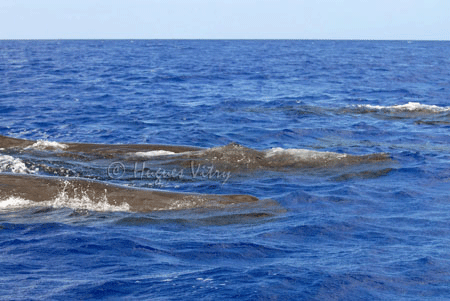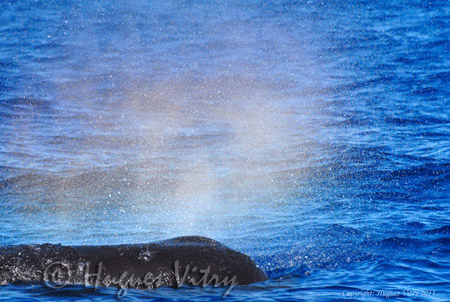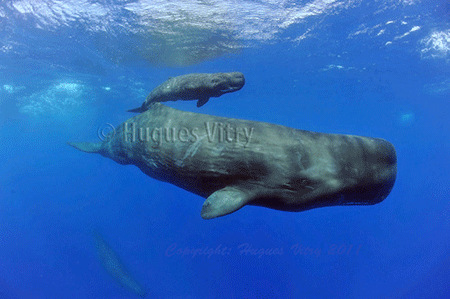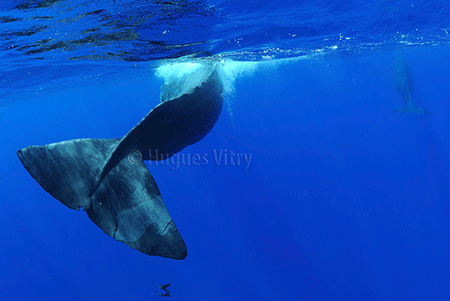Sperm Whales of Mauritius (Physeter macrocephalus)

Sperm Whales belong to the great family of teeth whales (odontocete). Their size can reach up to 18 metres for males and up to 14 metres for females.
They have about 20 teeth on each side of the lower jaw only.
Sperm Whales evolve in pods (Groups of individuals) and in a matriarchal society like elephants. They are commonly seen far out at sea, deeper than 700 meters or more, on the southern and western coast all the way to the north of the island.
They feed mainly of giant calamaris and fish and can dive down to 3000 meters. Their dive last approximately 20 minutes but can go up to 2 hours
Sperm Whales cruising slowly on the surface
Their coulour varies from Black to dark grey or grey or brown above water. Underwater from more than 10 metres their coloration is green or kaki colour.
Female live permanently in our region. Males are only present during mating time and they have lighter coloration.
They have a huge squarish head with a single slit like blowhole on the upper left side of the head and they blow at an angle of 45º towards the front and left side of the head; small, triangular or rounded hump; knuckles from hump to fluke; Broad flukes with no color makings like other whales. short stubby flippers.
They live approximately 50-60 years
They give birth from end of November to January

Sperm Whales blow at an angle of 45º on the upper left side and towards front of the head.


Sperm whales have short stubby pectoral fins.
They communicate by echo-sounds. They emit a very specific click click sound when they communicate. Males have another specific sonar echo they send when cruising that resemble a hammer knock on an anvil.
It is believed that they can communicate from one ocean to another.
Blue Water Diving Center organizes whale watching and during the briefing more useful information is given on these creatures.






